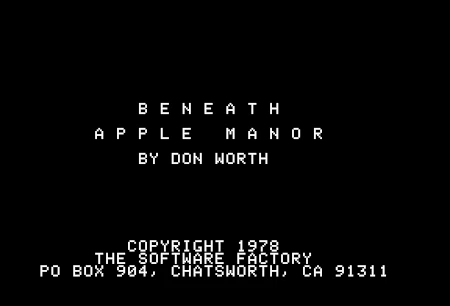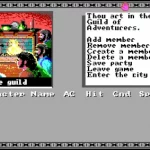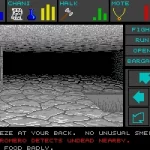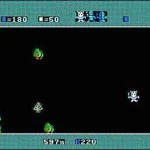Last Updated on: 7th January 2024, 11:10 am
Web site:
Category: Games
Sub-Category: RPG
Platform: Apple II, Atari 8-bit, DOS
License: Proprietary
Interface: GUI
Wikipedia: Beneath Apple Manor
First release: 1978
Beneath Apple Manor – an early graphical rogue-like dungeon crawl. Slay some monsters, build up some experience, explore deeper levels.
The goal is to find the Golden Apple, buried somewhere deep in the basement beneath the manor.
This game can be configured for either graphics or text, 10 different skill levels, and configurable room layouts. Each level is created randomly at the beginning of the game.
Besides of monsters which you have to fight, you can also find treasures, secret doors and hidden traps in the dungeons.
Beneath Apple Manor is considered a Roguelike, that is a game that has gameplay and mechanics very similar to the game Rogue.
The action, the drama, the uncompromising vision of the future! OK, maybe not. Still it was enough to keep me playing for hours at a time. The game really was pretty addictive, especially if you hadn’t seen any Roguelikes before (I hadn’t, though I played others later on). The game just gave you some simple commands and threw you into the fray.
You mostly spent your early time in the game learning. For example, when fighting ghosts you would be told that only magical weapons could damage ghosts. This not only told you something about ghosts, it made you realize there were weapons you could get in this game. And that there were at least two types of weapons (Magical and non-magical).
You also learned that just about everything was out to hurt you, which is kind of par for the course in a Roguelike. Monsters would pop out all over the place. On top of that, even items could hurt you. I remember finding a treasure chest with a potion in it. The game asked me if I wanted to drink the potion. In my youthful exuberance I naturally had to quaff the thing… and promptly lost all my memories. See, learning through forgetting. It’s the Rogue way to do things!
The game was written by Don Worth for the Apple II and published by The Software Factory in 1978.





